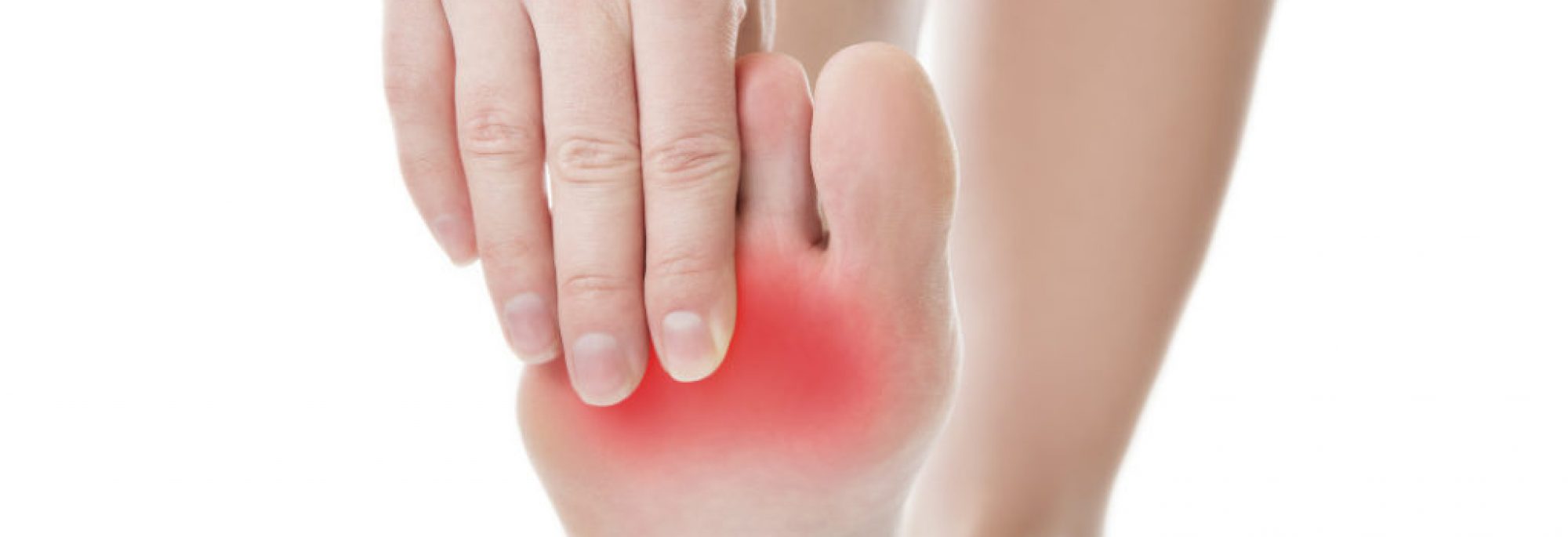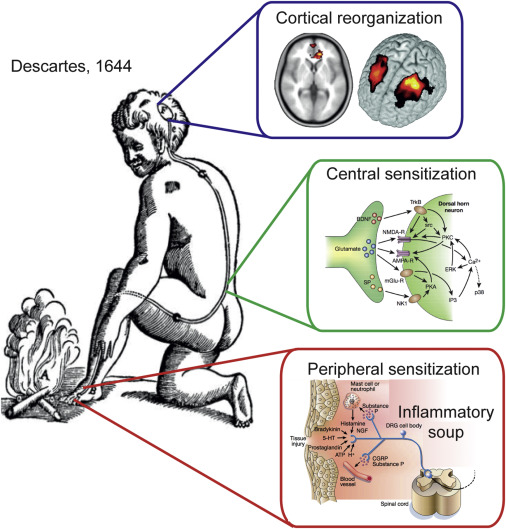Nociceptive pain usually appears suddenly and occurs in response to a specific situation. It tends to diminish as the affected area heals. For example, the pain caused by a sprained ankle improves as the ankle heals.
In the body, specialized nerve cells called nociceptors are responsible for detecting harmful stimuli that can cause harm, such as extreme heat or cold, excessive pressure, pinching, or chemicals. These warning signals are sent to the brain through the nervous system, triggering the sensation of nociceptive pain.
This process occurs very quickly, allowing people to withdraw their hand from touching a hot stove or instantly release weight from an injured ankle. Damage to the final organ leads to local tissue changes, an inflammatory soup, and alterations in afferent response properties; collectively known as peripheral sensitization (based on Julius and Basbaum, 2001). Furthermore, spinal cord circuits undergo numerous modifications, resulting in central sensitization (adapted from Scholz and Woolf, 2002), which involves enhanced glutamatergic signaling, changes in second-order messenger processes, and microglial activation. At the brain level, human neuroimaging studies reveal both structural and functional reorganization.
Considerable evidence suggests that nociceptors can be active even in the absence of pain sensation. For example, any expert in the psychophysics of pain would agree that applying a 50 kg load to a 1 cm² area of skin would cause intense pain. However, experienced ballerinas often wear pointe shoes for hours, feeling deeply emotionally satisfied as their toes support their body weight—an activity that should surely intensely and continuously stimulate their toe nociceptors. Thus, at least rigorously trained ballerinas can separate the experience of pain from the simple activation of nociceptors in the skin, muscles, and bones involved in maintaining precise posture.
Everyday motor actions can easily cause injury or tissue damage if we exceed their natural range of motion, such as when performing extreme extensions of the fingers, elbows, shoulders, hips, knees, or ankles, or when chewing or hitting hard objects, for example. This suggests that motor behaviors are collectively suppressed by nociceptors. However, this hypothesis has not been widely investigated beyond spinal reflexes. Similarly, there is no physiological evidence to explain the nociceptive circuits responsible for inhibiting these motor repertoires. Nociceptive modulation of motor programs is likely not mediated by the motor cortex, since only excitatory nociceptive inputs have been described in the corresponding cortical region.
The PIESOLE – Walk Better technology help people get more sensibility at skin, while proprioceptors provide (conscious, but usually habituated) information about the body’s location and position in space, nociceptors provide inputs that protect the body from injury. The fact that most humans, and perhaps many other species, spend the majority of their lives pain-free and without obvious tissue damage. This must be attributed to active nociceptors because there are no alternative neuronal mechanisms available to continually protect the body and subvert the potential for injury and the resulting perception of pain.
Nociception occurs continuously even without conscious perception of pain, being an essential physiological process (according to Christof Koch, the “zombie agent” of pain sensation, Koch, 2012). This subconscious mechanism provides faster and more accurate information that helps protect the body from potential tissue damage. From a mechanistic perspective, we believe that behaviors influenced by nociception, in the absence of pain, are based on already accustomed repertoires. On the other hand, when pain appears, it promotes new learning or nociceptive sensitization both peripherally and in the spinal cord, in addition to intensifying emotional learning due to the relevance and value attributed to the unpleasant event. Even so, the scope of nociception functioning and its underlying mechanisms in the absence of pain is greater than our current understanding allows and demands in-depth study in itself.


